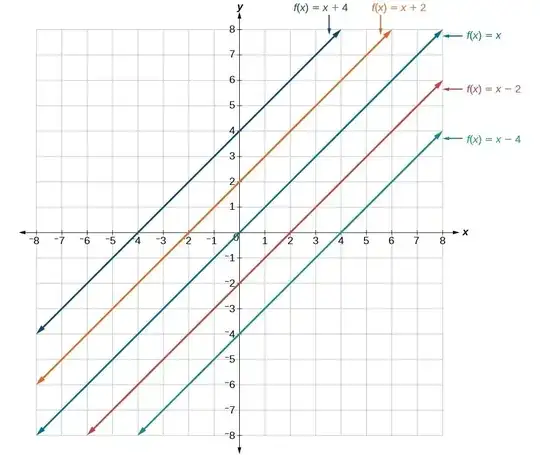I'm not asking for an algebraic explanation...I can do algebra. I know $f(x) = x - c = 0 \iff x = c$. Right now, I have to make my mind process four steps. First, a line with slope $|1|$ must angle 45° with the y-intercept. Second, I must consider the right triangle bound by $y = x$ and $y = 1, 0 \le x \le 1$ and $x = 0, 0 \le y \le 1$. Third, the remaining angle must be $180 - 90 - 45 = 45°$. Thus the triangle is isoceles, and the opposite and adjacent sides have the same length. Fourth, this means $\mid x-intercept\mid = \mid y-intercept \mid $.
I don't know why, but I can't "behold" immediately this. How can I eye-ball all this quickly?

